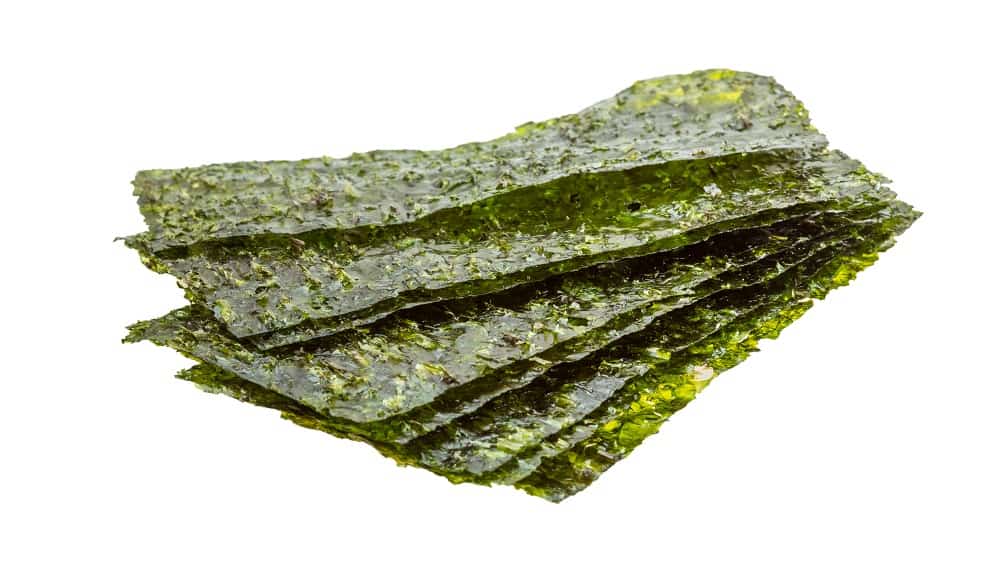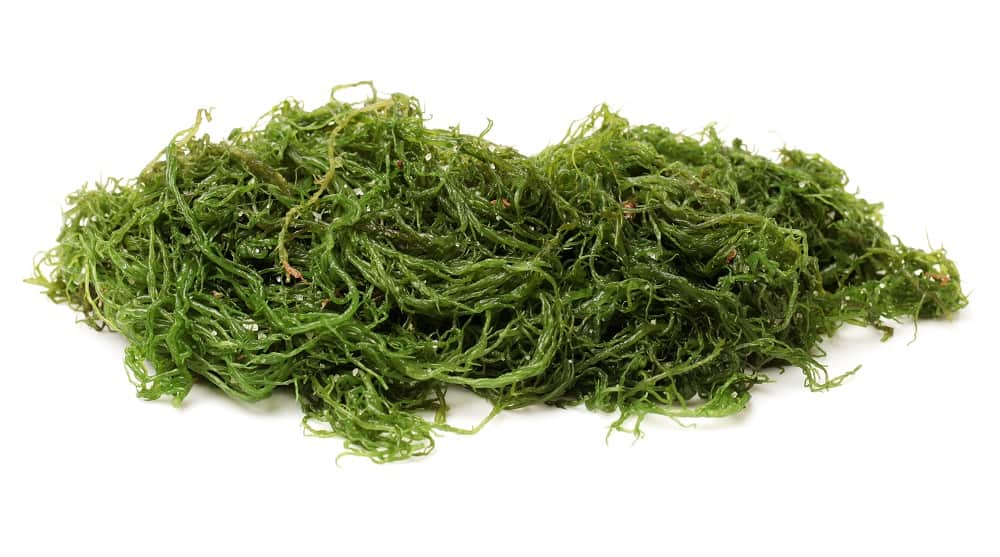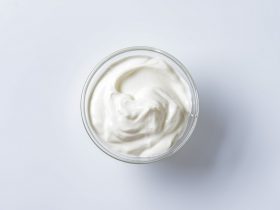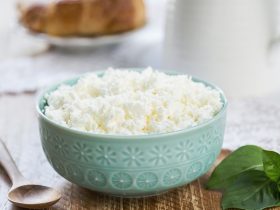During pregnancy, women are often motivated to optimize their lifestyle and adhere strictly to dietary recommendations. One of the current food products dubbed as “super food” is seaweed, due to its supposed many nutritional benefits. The question, however, is if seaweed is safe for pregnant women.
Seaweed consumption during pregnancy has been discouraged by many authorities. This is because of its potentially excessive iodine content and contamination with heavy metals.
In this article, we present the numerous nutritional benefits of seaweed intake. Then we will discuss the reported health benefits followed by the potential risks of seaweed consumption. Lastly, recommendations regarding its intake during pregnancy will be emphasized.
Dietary Consumption of Seaweed

In Japan, seaweed is a popular traditional food and has been an important part of their diet for many centuries. It is an important source of fiber, minerals, vitamins, polysaccharides, and iodine (Miyake et al., 2014).
In the Western world, inclusion of seaweed in the diet has traditionally been limited to artisanal practices and coastal communities. In recent years, it has gained wider consumer interest due to the attention being given on its bioactive components and potential health applications (Cherry et al., 2019).
Seaweed is a rich source of bioactive metabolites. Its compounds were found to have various biological activities, including anticoagulant, anti-viral, antioxidant, anti-allergic, anti-cancer, anti-inflammatory, anti-obesity, and neuroprotective properties (Miyake et al., 2014).
It has even already earned the title of “super food”, a market term for the recognition of its health benefits and superior nutritional profile. It is very low in fat, even though it contains high levels of mono- and polyunsaturated fatty acids. Seaweed is also very rich in carbohydrates, proteins, and vitamins, as well as minerals, which may be 10 to 100 times over that of vegetables (Circuncisao et al., 2018).
Nutritional Benefits of Seaweed Consumption
Current scientific studies have focused predominantly on brown seaweeds and their derivatives, largely because of their commercial abundance and perceived sustainability. It is also important to remember that the nutritional composition of brown, red, and green seaweeds varies between species, season, and ecology of the harvesting location (Cherry et al., 2019).
Protein
A 5 gram serving of dried brown, red, and green seaweed corresponds to a maximum of 1.97%, 4.5%, and 2.98%, respectively, of the Reference Nutrient Intake (RNI) for protein. Seaweeds have protein and amino acid contents comparable to those of beef on a gram for gram basis. However, seaweeds are consumed in much smaller quantities (Cherry et al., 2019).
Lysine
Lysine is an essential amino acid found in seaweeds (Misurcova et al., 2014). Other sources of lysine are plant proteins from corn, maize, soy, rice, and wheat, but only in limited quantities.
Fiber
Seaweed has high fiber content. A 5 gram portion of brown, red, or green seaweed can contribute up to 14.28%, 10.64%, or 12.10% of dietary fiber intake, respectively (EFSA Journal, 2010).
Polyphenols
Polyphenols are structural components of the cell wall. They are often bound to cell wall polysaccharides, protecting against oxidative damage (Heffernan et al., 2015). Brown seaweeds contain diverse flavonoid and phlorotannin polyphenols (Murugan et al., 2015).
The reported bioactivities of seaweed polyphenols include potential anticancer and antioxidant activities. They also may have a potential in preventing diabetes and obesity-associated complications (Cherry et al., 2019).
Carotenoids
Carotenoids have antioxidant properties that facilitate protection from UV damage. The main carotenoid in seaweed with potential application for health is fucoxanthin. Extracted from brown seaweeds, fucoxanthin is found to have the potential to reduce the risk of diabetes and obesity (Cherry et al., 2019).
The effects of fucoxanthin are thought to be brought about by inhibition of the digestive enzymes α-amylase and α-glucosidase, which in turn affects lipid metabolism by modulating leptin and adiponectin, resulting in reduction in lipogenesis (formation of fat) and enhancement of lipolysis (breakdown of fat) (Nagappan et al., 2017).
Minerals
A number of previous studies indicate that seaweed consumption contributes to dietary mineral intake. In Korea, it was found that higher intake of seaweed containing foods can be associated with sufficient calcium intake to prevent osteoporosis in postmenopausal women (Lim et al., 2015).
Similarly, Circuncisao et al. (2018) reported that calcium, phosphorus and magnesium are abundant in seaweed, in concentrations that exceed those of apples, oranges, carrots and potatoes. This is especially important as there is a current trend of trying to keep away from consumption of meat, eggs and dairy products, which are the major sources of these minerals.
However, there are also studies suggesting wide differences in mineral content between seaweed sources. One such report indicated that there is no meaningful contribution to dietary intakes of sodium, potassium, magnesium, phosphorus, calcium, iron, manganese, zinc, selenium, or copper with a daily portion of 5 grams of brown and red seaweed products from China, Japan, and South Korea (Dawczynski et al., 2007).
Iron
Seaweed is potentially an important source of iron. The Sargassum species have been reported to contain 156.9 milligrams of iron per 100 grams of dry weight. Its addition to both wheat- and maize-based bread was found to increase the proportion of absorbed iron (Garcia-Casal et al., 2009). Another study demonstrated that the Sargassum species improved iron absorption from a rice meal, with its iron content ranging from 81 to 290 milligrams per 100 grams of dry weight (Garcia-Casal et al., 2007).
Vitamins
Seaweed may represent an abundant source of both fat- and water-soluble vitamins. However, vitamin content varies with seaweed species, time of harvesting, and geographical location. Moreover, only a limited number of human studies have investigated the bioavailability of vitamins obtained from seaweeds (Cherry et al., 2019).
In a 5 gram serving of dried seaweed, the following have been found among different species (Paiva et al., 2014; Cherry et al., 2019):
- Vitamin A: 2-10% of RNI
- Vitamin C: 1-23% of RNI
- Vitamin B9 (folate): 3.75-2700% of RNI
- Vitamin D3: 415-635% of RNI
- Vitamin B12: 107-446% of RNI
Iodine
Iodine is a trace element required for the synthesis and function of the thyroid hormones, triiodothyronine (T3) and thyroxine (T4). Currently, 11 European and most other countries are battling with iodine deficiency. Because seaweeds have the ability to accumulate massive amounts of iodine, seaweed consumption may ensure its optimal daily requirement (Circuncisao et al., 2018).
In Japan, where approximately 20 different types of seaweed are consumed, iodine intake varies from 0.1 to 20 milligrams per day. Unfortunately, this can exceed the upper tolerable limits of 600 µg/day, as recommended by the European Food Safety Authority (EFSA), or 1100 µg/day, according to the World Health Organization (WHO) (Cherry et al., 2019).
Benefits of Seaweed Consumption

Depression
Several studies have provided insight into the neuroprotective effects of seaweed, suggesting that intake of seaweed might affect depressive symptoms in humans. In 2014, Miyake et al. reported that among 1,745 pregnant women in Japan, higher seaweed consumption was independently associated with a lower prevalence of depressive symptoms.
Similarly, Guo et al. in 2019 found that increased seaweed intake was associated with reduced incidence of depression among 500 adults in Japan. Nevertheless, further studies are necessary to confirm the beneficial effects of seaweed on depressive symptoms (Miyake et al., 2014).
Obesity
Fucoxanthin, a carotenoid, was found to have the potential to reduce the risk of diabetes and obesity (Cherry et al., 2019). Its inhibition of α-amylase and α-glucosidase in turn affects lipid metabolism by modulating leptin and adiponectin, reducing lipogenesis and enhancing lipolysis (Nagappan et al., 2017).
However, previous evidences are derived predominantly from animal studies. More research in humans is needed to determine whether fucoxanthin plays a role in altering lipid metabolism or in reducing the risk of obesity (Cherry et al., 2019).
Others
Reported bioactivities from red and brown seaweeds were associated with cardioprotective effects (reduction of blood pressure) via inhibition of angiotensin-converting enzyme, antidiabetic activity via inhibition of dipeptidyl-peptidase 4, promotion of iron absorption, and antioxidant effects. However, validation with human studies is needed (Cherry et al., 2019).
Phytosterols derived from seaweed, being neuroactive modulators in the central nervous system (CNS), have also been shown to be a potential therapeutic strategy for treatment of neurodegenerative disorders (Schepers et al., 2020).
Potential Risks from Consumption of Seaweed
While seaweed could be beneficial in terms of its vast nutritional contents, consumption of some species and sources of seaweed has also been associated with potential risks. These include toxicity from excessive iodine levels, or accumulation of heavy metals and contaminants (Bouga & Combet, 2015).
Currently, there are limited laws requiring food or supplement companies to disclose mineral, heavy metal, or iodine content of seaweed products. There are also no guidelines on safe portion size of whole seaweeds in order to prevent excess intakes. Hence, evidences about the risks of seaweed intake remain inconclusive (Cherry et al., 2019).
Excess Iodine Content
There are excessive variations in iodine concentration between seaweed species, season, and harvest location. Some reports the iodine content of seaweeds ranging from 0.06 to 624.5 milligrams per 100 grams of dry weight. But many do not quantify iodine in characterization studies of seaweeds. At present, there is limited and conflicting information about how individual seaweeds may impact iodine status and thyroid health (Cherry et al., 2019).
Disclosure of iodine content and provision of cooking instructions on product labeling are some strategies to prevent too much iodine intake from seaweed products. However, in the United Kingdom, it has been reported that 22 (only 10%) out of 224 seaweed food products being sold had information about iodine content (Bouga & Combet, 2015).
40 of the seaweed products disclosed enough information to make an estimate of the iodine content. Around 26 products had the potential to provide excessive iodine above the tolerable upper intake level of 600 microgam per day. However, for the remaining 162 seaweed products, iodine content remained unknown (Bouga & Combet, 2015).
Aakre et al. in 2020 demonstrated that habitual consumption of seaweed on a weekly basis can lead to excessive iodine status. Hence, consumers should be made aware of the risk associated with addition of seaweed in their diet.
Consumption of seaweed has been found to have conflicting evidences regarding its association with thyroid disorders. Iodine-induced hyperthyroidism has been reported by Mussig et al. (2006) in people who consumed kelp (large brown seaweed). In contrast, there has also been a report on iodine-induced hypothyroidism in Japanese individuals who consumed kelp (Cherry et al., 2019).
Heavy Metal Exposure
Another concern against seaweed consumption is its exposure to heavy metals like arsenic, aluminum, cadmium, lead, rubidium, silicon, strontium, and tin (Desideri et al., 2016). However, research findings are again inconsistent because contamination of seaweeds with heavy metals depends on their habitat and ecology. Continuous monitoring of heavy metals in seaweed food products has been called for due to the differences in bioabsorption between species (Cherry et al., 2019).
Rubio et al. (2017) claimed that levels of toxic metals from seaweed, in general, have not exceeded the reference value of <5% after consumption of 4 grams of seaweed per day, which is the average amount consumed by the Japanese. This indicates a negligible safety hazard of seaweed.
Still other studies suggest that regular consumption of seaweeds may lead to risk of heavy metal toxicity. Intake of 8.5 grams of seaweed per day can lead to 0.2 to 6.7 percent of provisional tolerable weekly levels of arsenic, mercury, lead and cadmium in over 400 Korean dried seaweed products (Cherry et al., 2019).
There has also been a study among 3,404 Korean adults, whose urinary arsenic concentrations were significantly increased in both second and third tertiles of seaweed consumption. Blood mercury levels were, likewise, significantly higher in the highest consumers of seaweed compared to the lowest consumers (Park & Lee, 2013).
Heavy metals can be mutagenic and carcinogenic to humans. Inorganic arsenic has been associated with DNA damage and predisposition to lung, bladder, skin and kidney cancers (Arslan et al., 2017). Moreover, the placental transfer of heavy metals during pregnancy can result in neurological, developmental and endocrine disorders in infants (Cherry et al., 2019).
In the European Union, there is still currently no laws limiting the toxic elements found in edible seaweeds. That is, except for France, which already defined limits for potentially toxic compounds in seaweed used for human consumption, although only as recommendation from their food safety authority (Circuncisao et al., 2018).
Cancers
Yang et al. in 2010 reported an inverse association between seaweed consumption of the Porphyra species and breast cancer risk in premenopausal women, but not in postmenopausal women. However, no association was found between eating Undaria pinnatifida seaweed and breast cancer risk.
Michikawa et al. (2012) showed that seaweed consumption can increase the risk of papillary carcinoma of the thyroid in postmenopausal women, but not in premenopausal women. In contrast, Wang et al. (2016) found no relationship between thyroid cancer and both populations.
Recommendations for Seaweed Consumption in Pregnancy

Koletzko et al. (2018) said that iodine supplementation is an important concern for vulnerable groups, such as pregnant women, since studies have indicated that even a moderate deficiency in iodine and thyroid hormones during pregnancy can have deleterious effects on the baby’s cognitive and psychomotor development. During pregnancy, iodine requirement increases due to hyperactive maternal production of thyroid hormones and elevated renal excretion, as well as increased requirement for placental transfer for the unborn babyʼs development.
Nevertheless, due to the possibility of considerable variations and very high iodine content in seaweed products, the Healthy Start – Young Family Network in Germany recommends avoiding the consumption of seaweed throughout pregnancy (Koletzko et al., 2018).
Cherry et al. (2019) agrees that the consumption of seaweed products is not recommended for pregnant women because of the variability and excessive iodine content of seaweeds. In addition, the presence of heavy metals, like mercury, in seaweed can have a synergistic effect to its increased iodine content and also impair thyroid function through the reduction of total T3.
Final Thoughts
Claims of health benefits from seaweed food products are often based on insufficient evidences from human studies. Moreover, there have been safety concerns about its potential adverse effects, particularly from the possibility of dangerously high concentrations of iodine and heavy metals in certain species (Cherry et al., 2019).
Because of these reasons, food safety standards have discouraged seaweed consumption in pregnant women. Although seemingly beneficial, the risks of seaweed intake far outweigh the nutritional advantages. Always consult with a health care provider regarding any dietary concerns during pregnancy.
References
- Aakre, I., Evensen, L., Kjellevold, M., Dahl, L., Henjum, S., Alexander, J., …, & Markhus, M. (2020). Iodine status and thyroid function in a group of seaweed consumers in Norway. Nutrients 12(11), 3483. doi: 10.3390/nu12113483
- Arslan, B., Djamgoz, M., & Akun, E. (2017). Arsenic: A review on exposure pathways, accumulation, mobility and transmission into the human food chain. Reviews of Environmental Contamination and Toxicology 243, 27-51. doi: 10.1007/398_2016_18
- Bouga, M., & Combet, E. (2015). Emergence of seaweed and seaweed-containing foods in the UK: Focus on labeling, iodine content, toxicity and nutrition. Foods 4(2), 240-253. doi: 10.3390/foods4020240
- Cherry, P., O’Hara, C., Magee, P., McSorley, E., Allsopp, P. (2019). Risks and benefits of consuming edible seaweeds. Nutrition Reviews 77(5), 307-329. doi: 10.1093/nutrit/nuy066
- Circuncisao, A., Catarino, M., Cardoso, S., & Silva, A. (2018). Minerals from macroalgae origin: Health benefits and risks for consumers. Marine Drugs 16(11), 400. doi: 10.3390/md16110400
- Dawczynski, C., Schafer, U., Leiterer, M., & Jahreis, G. (2007). Nutritional and toxicological importance of macro, trace, and ultra-trace elements in algae food products. Journal of Agricultural and Food Chemistry 55(25), 10470-10475. doi: 10.1021/jf0721500
- Desideri, D., Cantaluppi, C., Ceccotoo, F., Meli, M., Roselli, C., & Feduzi, L. (2016). Essential and toxic elements in seaweeds for human consumption. Journal of Toxicology and Environmental Health, Part A 79(3), 112-122. doi: 10.1080/15287394.2015.1113598
- EFSA Panel on Dietetic Products, Nutrition and Allergies. Scientific opinion on dietary reference values for carbohydrates and dietary fibre. EFSA Journal 8, 1462. doi:10.2903/j.efsa.2010.1462
- Garcia-Casal, M., Pereira, A., Leets, I., Ramirez, J., & Quiroga, M. (2007). High iron content and bioavailability in humans from four species of marine algae. Journal of Nutrition 137(12), 2691-2695. doi: 10.1093/jn/137.12.2691
- Garcia-Casal, M., Ramirez, J., Leets, I., Pereira, A., & Quiroga, M. (2009). Antioxidant capacity, polyphenol, content and iron bioavailability from algae (Ulva sp., Sargassum sp. and Porphyra sp.) in human subjects. British Journal of Nutrition 101(1), 79-85. doi: 10.1017/S0007114508994757
- Guo, F., Huang, C., Cui, Y., Momma, H., Niu, K., & Nagatomi, R. (2019). Dietary seaweed intake and depressive symptoms in Japanese adults: A prospective cohort study. Nutrition Journal 18, 58. doi: 10.1186/s12937-019-0486-7
- Heffernan, N., Brunton, N., FitzGerald, R., & Smyth, T. (2015). Profiling of the molecular weight and structural isomer abundance of macroalgae-derived phlorotannins. Marine Drugs 13(1), 509-528. doi: 10.3390/md13010509
- Koletzko, B., Cremer, M., Flothkotter, M., Graf, C., Hauner, H., Hellmers, C., …, & Wockel, A. (2018). Diet and lifestyle before and during pregnancy: Practical recommendations of the Germany-wide Healthy start – Young family network. Geburtshilfe und Frauenheilkunde 78(12), 1262-1282. doi: 10.1055/a-0713-1058
- Lim, Y., Lee, S., Tserendejid, Z., Jeong, S., Go, G., & Park, H. (2015). Prevalence of osteoporosis according to nutrient and food group intake levels in Korean postmenopausal women: Using the 2010 Korea national health and nutrition examination survey data. Nutrition Research and Practice 9(5), 539-546. doi: 10.4162/nrp.2015.9.5.539
- Michikawa, T., Inoue, M., Shimazu, T., Sawada, N., Iwasaki, M., Sasazuki, S., …, & Tsugane, S. (2012). Seaweed consumption and the risk of thyroid cancer in women: The Japan public health center-based prospective study. European Journal of Cancer Prevention 21(3), 254-260. doi: 10.1097/CEJ.0b013e32834a8042
- Misurcova, L., Bunka, F., Ambrozova, J., Machu, L., Samek, D., & Kracmar, S. (2014). Amino acid composition of algal products and its contribution to RDI. Food Chemistry 151, 120-125. DOI: 10.1016/j.foodchem.2013.11.040
- Miyake, Y., Tanaka, K. Okubo, H., Sasaki, S., & Arakawa, M. (2014). Seaweed consumption and prevalence of depressive symptoms during pregnancy in Japan: Baseline data from the Kyushu Okinawa maternal and child health study. BMC Pregnancy and Childbirth 14, 301. doi: 10.1186/1471-2393-14-301
- Murugan, A., Karim, R., Yusoff, M., Tan, S., Asras, M., & Rashid, S. (2015). New insights into seaweed polyphenols on glucose homeostasis. Pharmaceutical Biology 53(8), 1087-1097. doi: 10.3109/13880209.2014.959615
- Mussig, K., Thamer, C., Bares, R., Lipp, H., Haring, H., & Gallwitz, B. (2006). Iodine-induced thyrotoxicosis after ingestion of kelp-containing tea. Journal of General Internal Medicine 21(6), C11-14. doi: 10.1111/j.1525-1497.2006.00416.x
- Nagappan, H., Pee, P., Kee, S., Ow, J., Yan, S., Chew, L., & Kong, K. (2017). Malaysian brown seaweeds Sargassum siliquosum and Sargassum polycystum: Low density lipoprotein (LDL) oxidation, angiotensin converting enzyme (ACE), α-amylase, and α-glucosidase inhibition activities. Food Research International 99(Pt 2), 950-958. doi: 10.1016/j.foodres.2017.01.023
- Paiva, L., Lima, E., Patarra, R., Neto, A., & Baptista, J. (2014). Edible Azorean macroalgae as source of rich nutrients with impact on human health. Food Chemistry 164, 128-135. doi: 10.1016/j.foodchem.2014.04.119
- Park, S., & Lee, B. K. (2013). Strong positive associations between seafood, vegetables, and alcohol with blood mercury and urinary arsenic levels in the Korean adult population. Archives of Environmental Contamination and Toxicology 64(1), 160-170. doi: 10.1007/s00244-012-9808-x
- Rubio, C., Napoleone, G., Gonzalez, G., Gutierrez, A., Weller, D., Hardisson, A., & Revert, C. (2017). Metals in edible seaweed. Chemosphere 173, 572-579. doi: 10.1016/j.chemosphere.2017.01.064
- Schepers, M., Martens, N., Tiane, A., Vanbrabant, K., Liu, H. B., Lutjohann, D., …, & Vanmierlo, T. (2020). Edible seaweed-derived constituents: An undisclosed source of neuroprotective compounds. Neural Regeneration Research 15(5), 790-795. doi: 10.4103/1673-5374.268894
- Yang, Y., Nam, S., Kong, G., & Kim, M. (2010). A case-control study on seaweed consumption and the risk of breast cancer. British Journal of Nutrition 103(9), 1345-1353. DOI: 10.1017/S0007114509993242
- Wang, C., Yatsuya, H., Li, Y., Ota, A., Tamakoshi, K., Fujino, Y., …, & Tamakoshi, A. (2016). Prospective study of seaweed consumption and thyroid cancer incidence in women: The Japan collaborative cohort study. European Journal of Cancer Prevention 25(3), 239-245. doi: 10.1097/CEJ.0000000000000168




